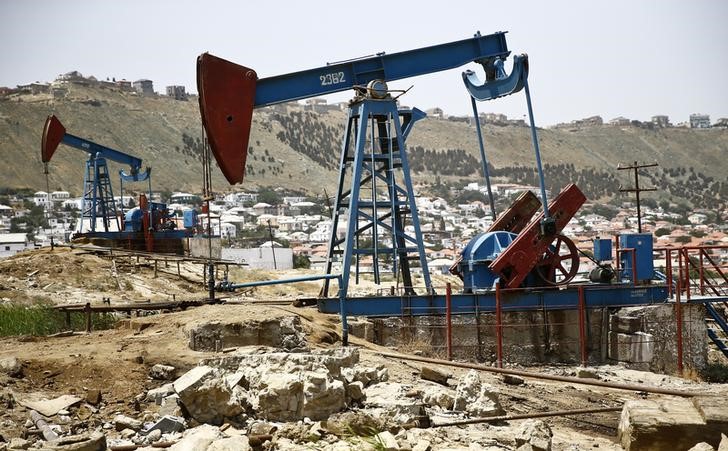Investing.com - Crude oil held gains in Asia on Friday with Brent comfortably above $50 a barrel as an output freeze by key producers was said to be gaining traction, though vast global oversupply continues to hang over the market.
On the New York Mercantile Exchange, WTI crude for September delivery gained 0.27% to 48.35 a barrel. On the Intercontinental Exchange (ICE), Brent crude for October delivery inched up 0.06% to $50.92 a barrel.
Overnight, Brent crude futures surged above $50 for the first time since Fourth of July, while hitting its highest level in nearly two months, as global oil prices continued to rally on the prospects that major producers could reach a deal to stabilize worldwide energy markets at a closely-watched meeting next month.
WTI crude has now closed higher in six consecutive sessions, jumping by more than 15% over the span. At session-highs, the front month contract for U.S. crude hit its highest level since June 24.
The latest rally in crude prices was triggered by comments from former OPEC head Chakib Khelil on the possibility of a production freeze by participants at an energy forum in Algeria in late-September. Speaking exclusively with Bloomberg, Khelil said leading OPEC members are pumping at near capacity and can afford to cap output at current levels as they approach their respective production ceilings. It came in response to a Reuters report that Saudi Arabia is considering ramping up output to as much 10.8-10.9 million barrels per day in August, building on last month's all-time record highs.
In contrast, Saudi Arabia pumped closer to 10.2 million bpd in January when the kingdom considered a comprehensive freeze along with Russia and two other producers. At the same time, Iran produced approximately 3.32 million bpd over the first month of the year far below its target of 4.1-4.2 million bpd. In April, a so-called Doha Agreement collapsed when Saudi Arabia insisted that Iran take part in any compact between top producers aimed at freezing output.
"All the conditions are set for an agreement,” Khelil told Bloomberg. "Probably this is the time because most of the big countries like Russia, Iran, Iraq and Saudi Arabia are reaching their top production level. They have gained all the market share they could gain."
Meanwhile, investors continued to react to a mixed report by the U.S. Energy Information Administration (EIA) from the previous session, which provided few indications that the massive supply glut on domestic markets could recede in the near-term future. Last week, U.S. output surged by 152,000 barrels per day for the week ending on August 12, marking its strongest increase in 15 months. While crude stockpiles nationwide fell by 2.5 million barrels on the week, inventories still remain near historically-high levels at 521.1 million barrels.
